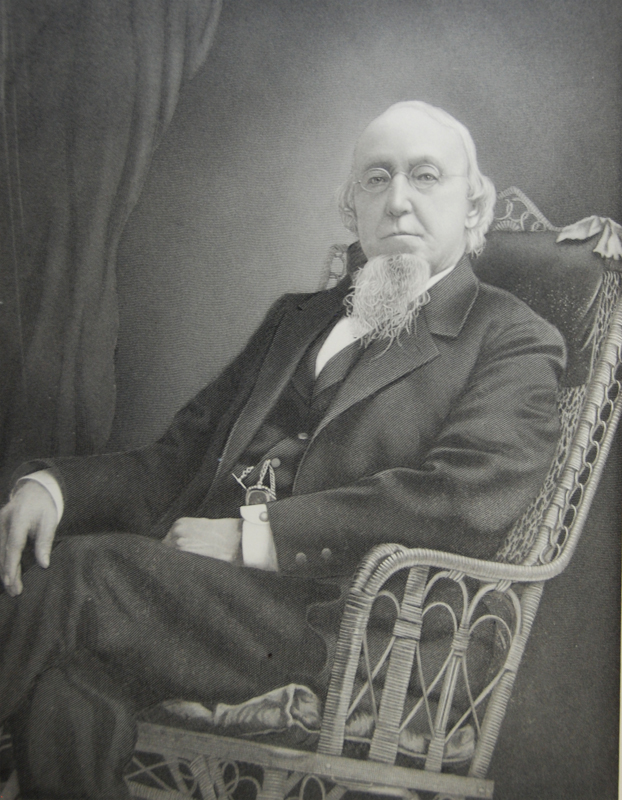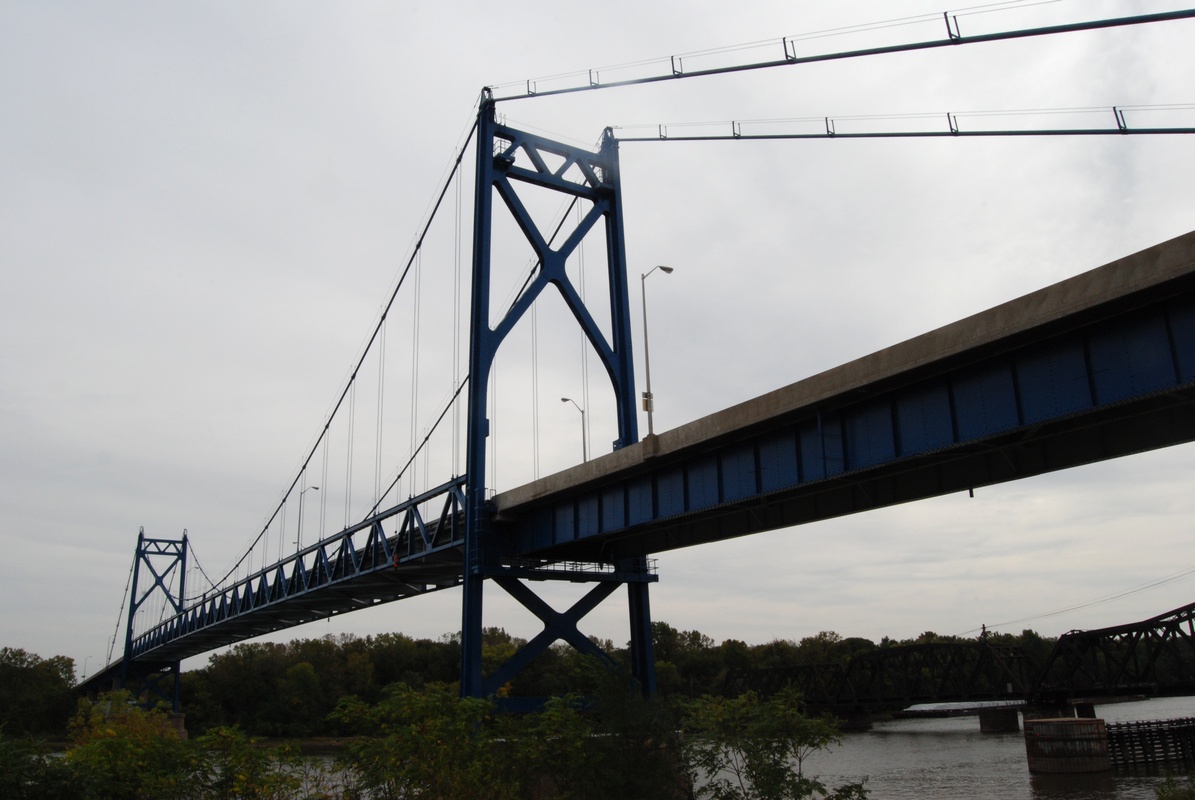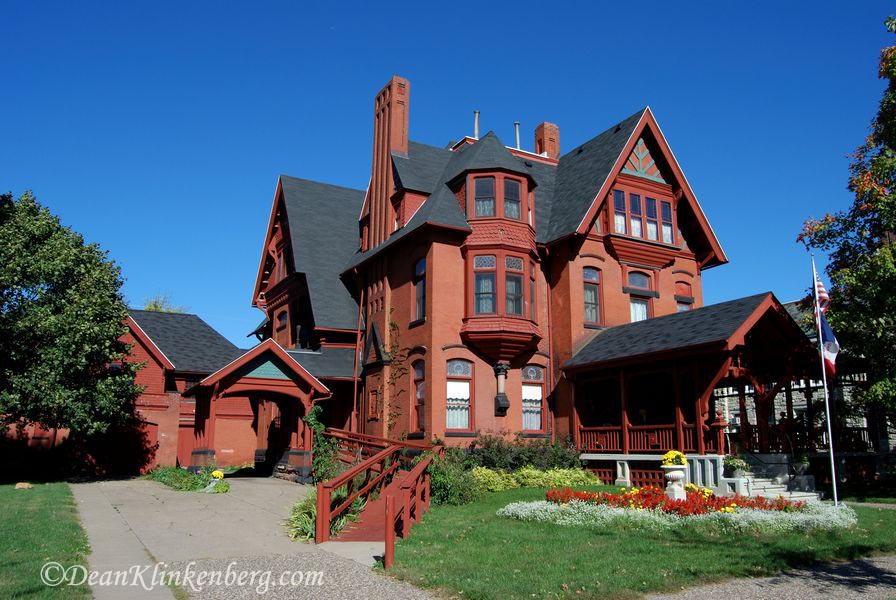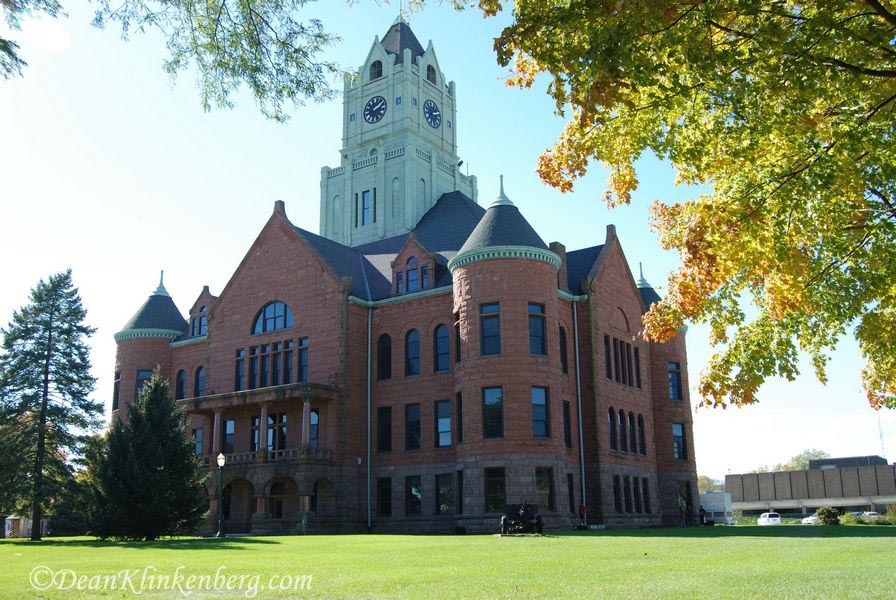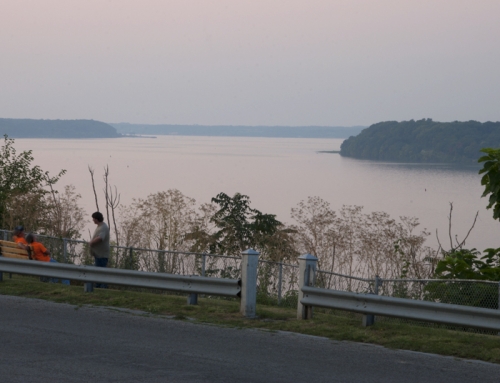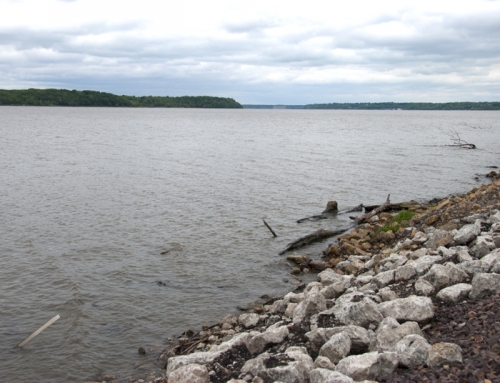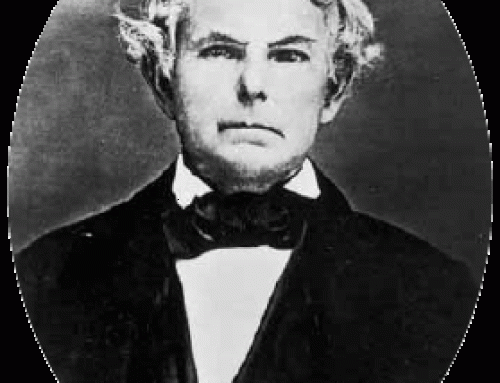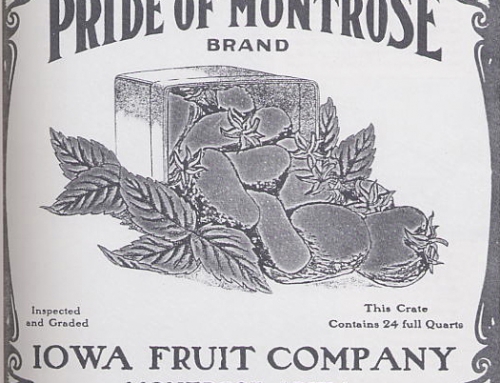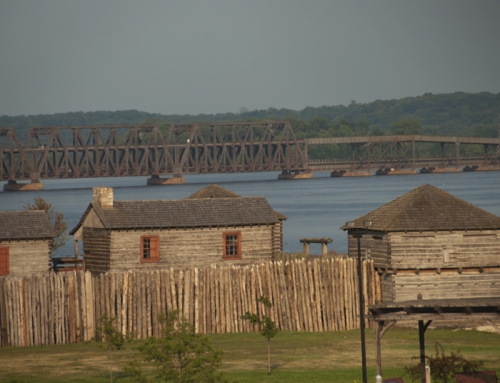Introduction
The first time I drove through Clinton, I noted “some towns look like they struggled from the very beginning; Clinton is one of those towns.” Appearances can be deceiving, though, as I learned. Driving through, you don’t get a sense of the city’s well-to-do past. That’s one of the struggles the town faces as a tourist destination—there is little connection between Clinton’s prosperous past and a present that simply looks uninviting to people passing through. With preservation a low priority for city leaders, there is little chance that this will change any time soon. What a shame. Clinton has an interesting history, beautiful buildings, and enough to keep you busy for a couple of days, but it’s hard to get past those first impressions.
Visitor Information
Visitor information is available at the Clinton Chamber of Commerce (721 S. 2nd St.; 563.242.5702). There is also an information kiosk in Riverview Park.
History
The Clinton area was once a string of small 19th-century river towns that consolidated into a single city. Elijah Buell, a former river pilot on the Ohio and Mississippi Rivers, kicked off the settlements when he arrived in 1835 and built a log house. This stretch of the Mississippi River was known as “the narrows” because, well, because the river is narrower here. Buell struck a deal with John Baker across the river to start ferry service between the two locations. Buell’s spot would grow into a town called Lyons; Baker’s town became Fulton, Illinois. The town of Lyons was platted in 1837 and incorporated in 1855. In 1894, the citizens of Lyons approved a merger with Clinton, but Lyons had a separate school system until 1954. To this day, residents of the north part of Clinton are more likely to identify their hometown as Lyons than as Clinton.
A bit south of Lyons, Joseph Bartlett built a log cabin and ran a trading store for Indians in the early 1830s; the town that grew around him was called New York. It was platted in 1836 but, unlike its more famous namesake, this village fell into a deep sleep until the Iowa Land Company was organized in 1855. Around that time, speculators were buying land in anticipation of the building of a new railroad bridge; the folks around New York eventually won and got the bridge. The town’s name was changed to Clinton in honor of the respected former Governor of New York, DeWitt Clinton. You probably wouldn’t be surprised to learn that many of the early settlers migrated from the eastern US The railroad’s arrival ignited growth and, by 1860, the town had 1,000 residents. In those early, heady days, Clinton’s growth was driven almost entirely by the railroads, because the city lacked a wharf big enough for steamboats. Lyons and Camanche remained the primary docking points for steamboats.
Clinton grew rapidly after the end of the Civil War. As the vast forests of Minnesota and Wisconsin were harvested, the logs were assembled into giant rafts and floated down the Mississippi River to sawmills. Log rafts often arrived at odd hours, waking up the whole town; even in the pre-dawn hours, stores and saloons would open their doors to serve the arriving loggers.
The first mills were built in 1855 and would eventually cover five miles of riverfront from Clinton to Lyons. Employees of the mills, many of whom were immigrants from England, Ireland, and Northern Europe (especially Denmark, Sweden, and Germany), worked 12 hour shifts, six days a week for the six months or so the mills operated, earning less than $1.50/day on average. Work conditions were often hazardous, and many men were killed on the job. The mill owners were not obligated to care for injured employees but some did at least pay doctor bills for their injured workers. Fires were a constant problem; Lamb & Sons alone suffered four fires. The mills were closed in the winter because logs don’t float very well down a frozen river. Some workers supplemented their incomes in winter by harvesting ice from the Mississippi River.
Lumber processing reached its peak in Clinton between 1880 and 1894 and was essentially finished by 1900; the last mill closed in 1910. In the late 1890s, as the mills closed, several thousand workers left Clinton in search of work elsewhere, resulting in many shuttered stores, failed banks, and vacant homes. In 1897, Clinton had 28,150 residents but only 3,173 were working, including 700 in the last two mills that would soon close. Today there is not a single piece of evidence that Clinton once had so many lumber mills; the last remaining structure from any lumber-related business was razed in 1977 to make way for the levee.
The booming lumber business created a disproportionate number of millionaires in Clinton. Families such as the Youngs, Lambs, Joyces, and Curtises got very rich and built grand mansions, many along 5th Avenue South. Sadly, most of the mansions, as well as the stately elms that formed a canopy over the street, are long gone.
Into the 20th century, the Curtis Company was arguably the most important employer in town. As the giant sawmills closed down, the Curtis Company continued to expand its business manufacturing window sashes, doors, and interior and exterior woodwork. The Curtis business was advanced by an important innovation they developed: glazing window sashes at the factory instead of at the build site. The Curtis Company provided some stability in the local economy as Clinton slowly built a more diverse manufacturing base. In 1907, Clinton Sugar Refining began operations; it would later become Clinton Corn Processing before being absorbed into Archer-Daniels-Midland (ADM).
Much of Clinton’s economy was (and still is) dependent upon the farm economy, so Clinton suffered earlier than the rest of the country when the farm economy slumped well in advance of the Great Depression and took longer to recover. Clinton’s economy got a boost during the Depression when the Works Project Administration built Riverview Stadium and also worked on Eagle Point Park. The building of Lock and Dam #13 also provided a number of needed jobs.
Clinton was hit hard by the flood of 1965. In Lyons alone, 50 square blocks of real estate became Mississippi river bottoms, as did 25 square blocks in south Clinton. The disaster of 1965 resulted in a new, $23 million levee. Coincidentally, the following year the Curtis Corporation was no longer able to stay afloat and shut down after a century of doing business. The closure signaled hard times for the rest of town, as a number of other Clinton-area businesses also closed and the city lost nearly one-third of its population. It looks like the worst is over though. The ADM plant is growing and adding new jobs, and a newly expanded casino should provide a boost, too.
Exploring the Area
The Clinton County Courthouse (612 N. 2nd St.) is an imposing Romanesque structure in the middle of town. Designed by G.S. Mansfield, it was completed in 1897 at a cost of $168,000. The exterior was built with red sandstone and granite, with a central tower made of copper. There’s not much to see inside.
Downtown Clinton has lost much of the luster it once had, but there are still a few things to see. The Van Allen and Company Department Store (200 5th Ave. South) was designed by renowned architect Louis Sullivan—the inventor of the modern skyscraper—and completed in 1914. The first floor is now a pharmacy, while the upper floors have apartments.
The Clinton County Historical Society Museum (601 S. First St.; 563.242.1201) has two floors and four rooms chock full of objects and displays tied to Clinton’s past, including: the lumber industry, dioramas offering a peak into past living styles, military uniforms from every US war, a tattered Japanese flag from WWII, an exhibit on the actress and Clinton native Lillian Russell, and a very large room of very large agriculture machinery. Give yourself at least an hour here.
The Catholic Historical Center at St. Boniface (2520 Pershing Blvd.; 563.206.1314) houses artifacts from Clinton’s old Catholic churches in the former St. Boniface Church, a towering Gothic revival structure built in 1908. They are usually open Tuesday mornings and Saturday afternoons, but you can call to arrange a visit, too.
In the late 1800s, Clinton counted 13 millionaires among its 2,000 residents, a proportion that would make many cities envious. Most of the mansions built by those millionaires along 5th, 6th, and 7th Avenues South are long gone, but you can still tour one, the Curtis Mansion (420 5th Ave. South; 563.242.8556). George M. Curtis built this huge Queen Anne-style house between 1883 and 1885. He made his fortune manufacturing windows, doors, moldings etc. The house itself is a marvel, especially on the first floor, with elegantly carved molding of richly grained woods like cherry and oak. The upstairs rooms were rented for 60 years by the Clinton Women’s Club to generate revenue for house maintenance, so they lack the elegance of the first floor.
The Felix Adler Discovery Center (332 8th Ave. South; 563.243.3600) is a science-oriented hands-on museum for kids under 12. It was named after the Clinton native who was known as the “King of Clowns” for his 50-year clowning career, much of it with the Ringling Brothers, Barnum, & Bailey Circus.
The Sawmill Museum (2231 Grant St.; 563.242.0343) honors the city’s lumber mill past; take time to watch the movie on the history of the industry in Clinton.
The Bickelhaupt Arboretum (340 S. 14th St.; 563.242.4771) has 14 acres of landscaped gardens west of downtown.
St. Irenaeus (2811 N. 2nd) is a monumental church that has long been a landmark in the region. Let’s hope that continues. The parish was founded in 1848 by Bishop Loras of Dubuque and the cornerstone of the Gothic Revival church was laid in 1864. The building was completed in 1871 at a whopping cost of $45,000, which is even more striking considering that almost all of the construction work was donated by members of the parish. Half of the construction costs came from the deep pockets of Father Francis Cyrillus Jean, who came from a wealthy family; his inspiration for the design came from a church in his native Lyons. The church is built from sandstone that was quarried from nearby bluffs and transported to the site by horse-drawn carts. Buttresses support the exterior walls; the twin towers (166 and 136 feet tall) are topped by wood spires that were completed in 1889. The spacious nave can seat 2,000 worshipers, yet the interior does not have a single pillar or brace supporting the 53-foot-high-single-vaulted ceiling; the details of how the roof is supported were kept secret. The church now hosts pre-Vatican II style masses that are led by priests from the Society of Saint Pius X.
Christ Episcopal Church (2100 N. 2nd St.; 563.242.5740) was completed in 1856; the design was inspired by St. Martin’s in Canterbury, England. The exterior is built of limestone and has a distinctive corner tower and buttresses. An expansion in 1898 added length to the sanctuary and necessitated rebuilding of the chancel. A renovation of the ceiling in 1904 exposed the original open timber construction.
Wild Rose Casino and Resort (777 Wild Rose Dr; 563.243.9000) is a land-based casino with 600 slot machines and 14 gaming tables spread over 28,000 square feet. It is located in the southwestern part of Clinton, less than a mile west of the US 30/US 67 intersection.
Parks Along the Mississippi River
Eagle Point Park (3923 N. 3rd St.; 563.243.1260) is one of the best parks along the Upper Mississippi. There has been a park on this site since the late 1800s, no doubt because of the dramatic vistas overlooking what is now—thanks to the lock and dam system—one of the widest sections of the river. In the 1930s, the Works Progress Administration built several stone structures in the park, including the watchtower on the south end of the park. You should have no trouble finding a spot for a picnic, even on a summer weekend.
Clinton Riverview Park (563.243.1260) parallels the river just east of downtown; it is a popular spot to walk or bike, stop for a picnic lunch, swim at the public pool, or take in a Clinton Lumber Kings baseball game; see below.
Sports & Recreation
Bulger’s Hollow Recreation Area (170th St.; 815.259.3628) is just north of Clinton, located at the point where the Mississippi River stretches 3½ miles from bank to bank; the serenity of the site is occasionally disrupted by a passing train.
The Clinton Lumber Kings (563.242.0727) are a professional baseball team in the Prospect League. Games are played in Riverview Park’s NelsonCorp Field, a stadium built in 1937 by the Depression-era Works Project Administration.
Riverview Municipal Pool (Riverview Park; 563.242.4673) has a large swimming pool, slides, and kiddie pools. Open swim hours vary, so call ahead to confirm when the pool is open to the public.
Riverview Park Recreational Trail is a paved hiking and biking trail that runs about five miles from Riverview Park near downtown to the north to Eagle Point Park.
Culture & Arts
Just down the street a bit from the river you’ll find River Arts Center (229 5th Ave. South; 563.243.3300), a small gallery that highlights the work of local artists.
In the summer, the Clinton Area Showboat Theater (311 Riverview Dr.; 563.242.6760) stages live shows, mostly musicals, at the Lillian Russell Theater on a restored paddlewheeler.
The Clinton Symphony Orchestra (563.243.6042) performs several times throughout the year.
Entertainment and Events
Farmers Market
You’ll find the local farmers market at Lyons Foursquare Park (Main Ave. @ Roosevelt St.) on Wednesday evenings (4-6) and Saturday mornings (8-noon) from April through October.
Festivals
In January, Clinton Community College (815.259.3628) partners with the U.S. Army Corps of Engineers and the U.S. Fish & Wildlife Service for an Annual Bald Eagle Watch.
In June, the Felix Adler Museum honors its namesake and inspiration with Felix Adler Day.
Looking for information about other Mississippi River communities? Check out Road Tripping Along the Great River Road, Vol. 1. Click the link above for more. Disclosure: This website may be compensated for linking to other sites or for sales of products we link to.
Where to Eat and Drink
Clinton has plenty of fast food options, but I see no reason you need to stop at any of them. You can eat just as cheaply, and nearly as quickly—if you are in a rush—at any number of small, independent restaurants around town. Please check out these places.
Just north of town and 1.2 miles down a couple of gravel roads you’ll find Wide River Winery (1776 Deer Creek Rd.; 563.340.5678), home to organic wines of good quality and a beautiful blufftop setting. They have free wine tastings on summer weekends.
For food light on your wallet but high in carbs, head to Sweetheart Bakery (245 Main Ave.; 563.242.4105), where you can get donuts like bismarks and long johns, turnovers, and something called a Blarney Stone, a piece of sweet cake covered with frosting and rolled in crushed peanuts that is sweet but not as sweet as you might think.
Get your coffee fix at 392⁰ Caffé (216 S. 2nd St.; 563.484.0392), where you can get the usual range of specialty coffee drinks, cute and delicious pastries, and a decent lunch.
Nora’s Café (212 S. 2nd St.; 563.243.1009) serves hearty food at cheap prices with a small town diner ambience.
If you have a big appetite, check out Vitales Pizza (1134 Camanche Ave.; 563.242.6140) where you can get a malaise inducing deep-dish pizza or a perfectly prepared, crispy medium thick crust.
You can’t beat the views from the Candlelight Inn at the Clinton Marina (511 Riverview Dr.; 563.243.3200); you can get lighter fare like salads and sandwiches or fill on prime rib.
For a fine dining experience, check out Rastrelli’s Restaurant (238 Main Ave.; 563.242.7441), which has been serving sandwiches, pasta, Italian-inspired entrées, and pizza to residents of Clinton and beyond since 1939.
Can I get a hallelujah? The folks behind Great Revivalist Brewery (238 4th Ave. S; 563.521.2337) turned a deconsecrated Episcopal church into a temple of gustatory delight. The restaurant has been seamlessly molded into the existing historic features of the building; the mosaic art over the old altar area will quickly grab your attention. On top of that, they serve good food from breakfast through dinner that you can enjoy with their tasty craft beers.
Where to Sleep
Camping
Bulger’s Hollow Recreation Area (170th St.; 815.259.3628) has primitive camping sites next to the river in a very shaded area; no services.
Riverview RV Park (9th Ave. North & Riverview Dr.; 563.243.1260) is open year-round, although there is no water service from October to April. The 24 sites are rather close together, and there isn’t much shade; no tents.
Bed-and-Breakfasts
Fisher House Bed & Breakfast (407 5th Ave. S; 563.249.8948) rents four rooms in a stunning 19th century Queen Anne masterpiece. Guests are served a full breakfast.
Budget
Clinton has several national brands that you should have no trouble finding, but rooms generally cost a bit more here than in the Quad Cities. If you want to go with an independent operator, there are three in town; the rooms at these motels are equipped with a microwave and small refrigerator.
The Timber Motel (2225 Lincolnway; 563.519.5000) has 28 large rooms that show some wear and tear but are clean.
The Oak Tree Inn (2300 Valley West Ct.; 563.243.1000) is the newest of the bunch and has 123 non-smoking rooms that are reasonably large and spotless; the rate includes a coupon for a free breakfast at the Maid Rite restaurant next door. It’s hidden behind a shopping center at the intersection of US 30 and US 67 in the southwest part of town.
Moderate and up
The Wild Rose Casino Hotel (777 Wild Rose Dr.; 800.457.9975/563.243.9000) has 60 comfortable rooms equipped with coffee pots.
Getting Around
Clinton has numbered streets and avenues; generally speaking, streets go north-south and avenues east-west. In order to find your way around town, please note that the avenues are numbered and divided into north and south. Thus, there are two 3rd Avenues: 3rd Avenue North and 3rd Avenue South. Clinton is also bisected by US Highway 30, also known as the Lincoln Highway. It was the first cross-country highway in the United States.
Resources
- The local newspaper is the Clinton Herald (563.242.7101).
- Post Office: 300 S. 1st St.; 563.242.6214.
- Clinton Public Library: 306 8th Ave. South; 563.242.8441.
Community-supported writing
If you like the content at the Mississippi Valley Traveler, please consider showing your support by making a one-time contribution or by subscribing through Patreon. Book sales don’t fully cover my costs, and I don’t have deep corporate pockets bankrolling my work. I’m a freelance writer bringing you stories about life along the Mississippi River. I need your help to keep this going. Every dollar you contribute makes it possible for me to continue sharing stories about America’s Greatest River!
Clinton Photographs
©Dean Klinkenberg, 2024, 2021, 2018,2013,2011


